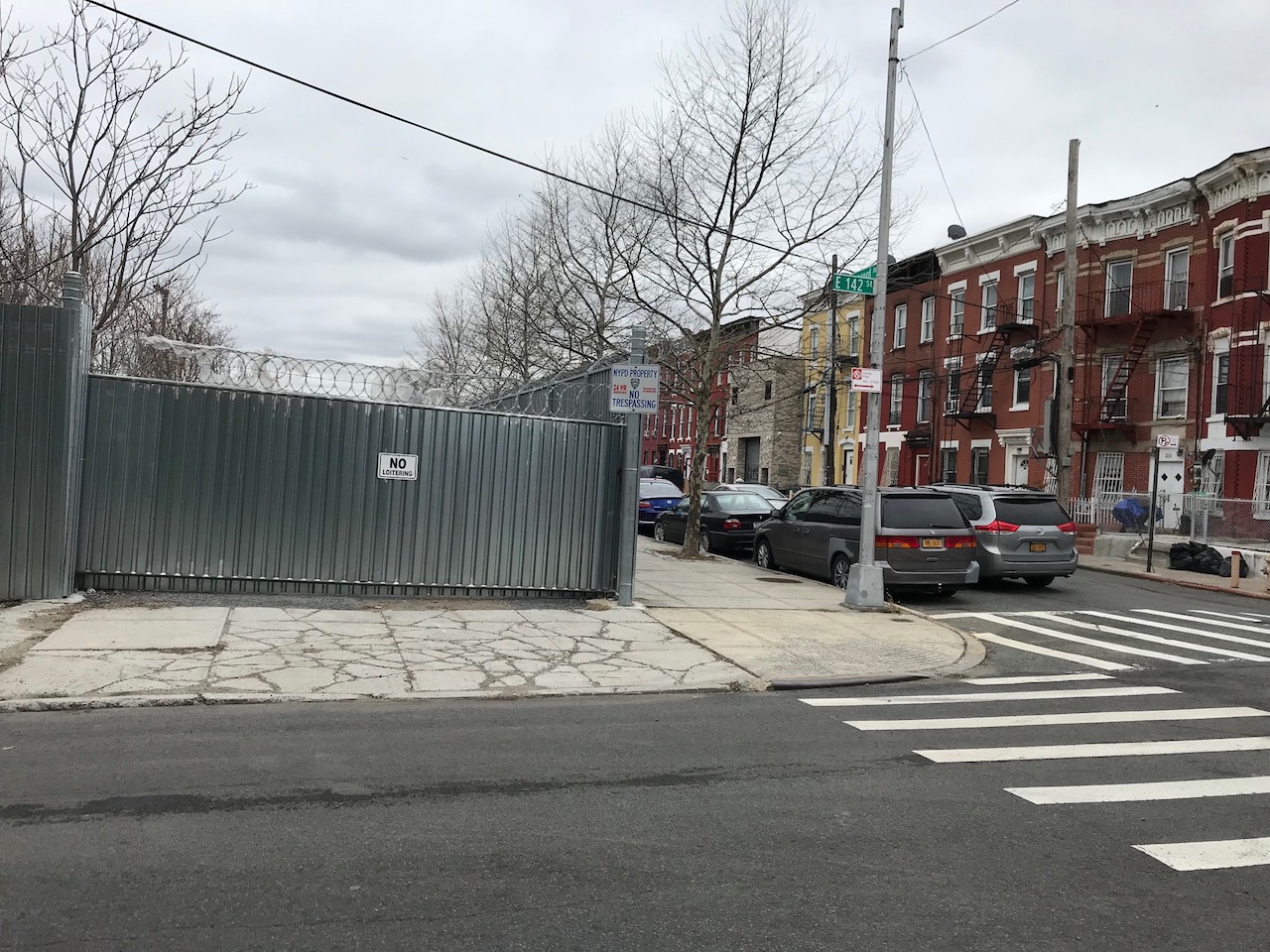
City says Mott Haven tow pound is the only viable site
Mayor de Blasio’s creation of a task force to help iron out the design of a new jail in Mott Haven is not sitting well with the Bronx borough president.
In a scathing letter to the mayor on Apr. 22, Borough President Ruben Diaz Jr. registered his “disdain for the timing of your creation of a Design Advisory Group for the future sites of the new borough-based jails that have been proposed to replace Rikers Island” by 2027, blasting the administration for its “lack of any real commitment to community input in its ongoing proposal to build a new jail in The Bronx.”
“I find it extremely disconcerting that your office, the Office of Criminal Justice (MOCJ) and the Department of Design and Construction (DDC) are proposing such an advisory group prior to the completion of the Uniform Land Use Review Procedure (ULURP), which is currently underway,” Diaz wrote. “The timing of this announcement makes it crystal clear that your administration has no desire to even pretend to take community input into account during the siting process, and in fact views the outcome of the ULURP as a fait accompli.”
The mayor’s plan calls for reducing the city’s jail population from its present jail population of 11,000 inmates to 5,000, then closing the jails on Rikers Island, adding new jails in existing facilities in Brooklyn, Queens and Manhattan and building a new one at the corner of Concord Avenue and E. 142nd Street. Each jail would house 1,471 inmates. The Bronx jail would stand 425 feet high, or 26 stories.
However, MOCJ’s Deputy Director Dana Kaplan said that the agency has had dozens of meetings with Bronxites since the mayor first announced the project a year ago, and added that locating the jail near Diego Beekman Houses, where violent crime rates are high, will not hurt the neighborhood. Preliminary design of the new site includes 250 units of housing the city says will be affordable, 31,000 square feet of community and retail space and 150 underground parking spaces.
“There’s some evidence that it can be integrated into the neighborhood in a way that’s not negative,” said Kaplan. Property rates around the Brooklyn jail have risen despite the reopening of a previously shuttered jail there, she said, and there has been “no negative impact on crime. Hopefully these things don’t have to be in conflict with each other.”
The ULURP, which must be finalized for the project to proceed, started in late March when the City Planning Commission voted to certify the plan to close Rikers and open smaller jails in four of the five boroughs.
But with Diaz’ support a number of Mott Haven residents have demanded that the city locate the Bronx jail elsewhere. Diaz led a rally on the steps of City Hall in March, and another in front of the NYPD tow pound on which the new jail is proposed last May.
The ULURP process projects to be a thorny ride for the mayor. First, Bronx Community Board 1 has until early June to review the plan and pass its recommendations on to Diaz’ office. So far, Board 1 members have spoken out emphatically against the plan, arguing that putting a jail in an area where gang activity has been a problem will lead to more violence, and stifle positive development.
From the borough president’s office, where another no vote seems like a sure thing, ULURP review moves on to the City Planning Commission and the City Council before ending with the mayor’s office. The plan could hit turbulence in the City Council as well. The Council’s Planning Use commissioner, Rafael Salamanca, has sided with Diaz in calling for the jail to be built on E. 161st Street. Wherever it is built, construction of a new jail means that the Vernon C. Bain Center, the notorious “floating jail” which has been moored in the East River since the early 1990s, will be gone from Salamanca’s district as a result.

Opponents of the Mott Haven plan say that the Bronx Hall of Justice on E. 161st Street is an ideal site to put the jail instead, but the city has argued that two of the three parcels that comprise that site are state-owned. In his letter to the mayor, Diaz wrote that “it is my understanding that New York State would consider the disposition of State owned property for these plans once fully realized.”
But the problem surrounding the E. 161st Street site is more complicated than that, said MOCJ’s Kaplan. Even if the two state-owned parcels were acquired to add to the one city-owned lot, the total space would still be too small for what a new facility with 1,500 beds would require. The building would be “significantly taller” than on the Mott Haven site, and would be “awkwardly configured,” she said.
At a meeting of Board 1 on March 28 at Metropolitan College of New York on E. 149th Street, residents lambasted Councilwoman Diana Ayala for backing the project and for holding neighborhood advisory meetings they contend they have not been invited to take part in. Ayala apologized to Board 1 members, acknowledging that the public has not been sufficiently informed during the planning process, but countered that bringing a jail to her district will result in much-needed investment from the city into social services and education.

